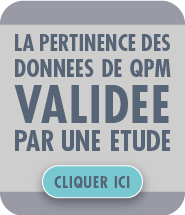Vocation
QPM DPRH belongs to the Accompaniment range, the objective of which is to aid professionals in the context of individual accompaniment. These applications are intended for professionals accompanying people either individually or professionally (psychologists, psychotherapists, coaches, consultants, Human Resources consultants, trainers, etc.). QPM®provides them with a range of tools to measure, for instance, behaviors, stress, anxiety, emotional intelligence, primary behaviors, etc. as well as, in some cases, performing statistical studies and barometers for monitoring purposes.
The QPM DPRH results sheet enables a professional to identify, in under one minute, the way a person operates, their behavioral style, strengths and their paths for progress. Using highly advanced objective indicators, it provides an instantaneous and reliable response to the requirements of accompaniment and enables to confirm and refine the professional’s own analysis. It enables a professional experienced in using the tool to refine his analyses and find additional avenues for action. The thousands of measurements performed using QPM DPRHhave enabled establishing correlations between the different criteria on these tables, veritable bridges that provide an accurate overall vision of the person and their behavior patterns. During the training, the users learn to identify the different criteria that are significant of the condition of the person being measured and the behaviors that this condition will generate. This “in vivo” reading is very useful in accompaniment, both in terms of the information that it provides, and in lending credibility in the eyes of the customer.
Users concerned
- Psychologists and psychotherapist
- Physicians
- Human resources consultants
- Coaches
- Trainers
Contents
QPM DPRH comprises 215 criteria organized into different chapters :
- The primary behaviors (works of Mac Lean & Cloninger)
- The behavioral imprints
- Emotional intelligence (works of Daniel Goleman)
- Potential in various areas
- Relations with the environment (works of CG Jung)
- Stress
- Anxiety
- A few solutions to implement







